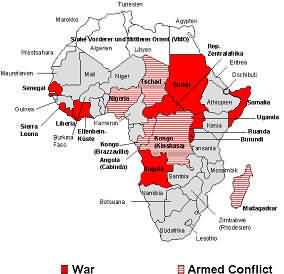
Conflict
|
NDRD |
|
|---|---|
|
Gulf Cooperation Council |
شبكة دول الأراضي القاحلة و التطوير |
|
Crisis & Conflict
According to the "Natural Heritage Institute" there is a strong correlation between migration, poverty and environmental degradation. The natural resources in and around the cities and refugee camps, in which human beings have settled, have already been over utilized. In addition, difficult living conditions as well as the absence of cultural identity undermine social stability. Research presented at that time stated that alone in 1994 approximately half of the 100 armed conflicts had environmental causal factors characteristic of drylands. Consistent with the study, violence has been induced by mass migration of people, who have had no choice but to leave their lands in search of other livelihoods once their land become degraded and lost productivity, exposing them to the risk of conflicts with the established populations in the new lands. This proves that the environmental push element for migrations triggered by environmental scarcity is hidden behind ethnic or socio economic considerations. A considerable amount of empirical work on the relationship between environmental degradation and likely violent conflicts indicates that countries in this particular region seem to be more vulnerable. Nevertheless, even if it may be relatively easy to identify the parallel occurrence of environmental degradation and human insecurity, yet assuming a causal link could be misleading and dangerous. In reality tension and armed conflicts take place in response to a combination of stimuli: environmental, economic, social and political. As a consequence, separating environmental processes from the structures within which they are embedded is both difficult and a distortion of reality. |
|
War and Armed Conflict in Africa 2003
Source: University of Hamburg / Institute for Political Science |

Drylands
Knowledge
Base

